#Global Structured Cabling
Explore tagged Tumblr posts
Note
Hello Bytewire, I love your analysis!, and may I ask about architects planet, all what I seen/know about it is picture in ending of SBZ, and interesting, what do you think/know about their planet? ^^
Thank you! Every bit of appreciation I get motivates me to continue posting. I enjoy knowing that people find my posts useful/interesting.
Analyzing the Architect Home World.
Not much is known about the state of the Architect's home world regarding Architect settlements and life on the planet. While the buildings we see are intact, it is not definitive towards the state of the collective. If it still exists. So, instead of this being speculation about whether Architects still operate on their home world, I will go over all the information that I can gather about their planet from what we have seen. I will also use freecam to take a closer look at details you wouldn't normally be able to view.
Let's begin with what we see in the final cutscene.

As AL-AN navigates out of the Phase Gate and through the atmosphere the ship is steered through heavy storm clouds, narrowly being guided through edifices of buildings that form what appears to be a cityscape. The ship breaks through the storm and is met with a harsh sun glare before getting a fuller view of this grand Architect city sitting on an area of high elevation. There are structures much bigger than we see in 4546B, though it's hard to discern their purposes. Despite AL-AN not having been here for a millennium—there is a surprising lack of ruin. Floating buildings supported by cables haven't fallen, multiple Phase Gates are still in operation, and there is no overgrowth of any plant life. I wouldn't necessarily call it 'maintained' but it certainly isn't in a state of desecration.
Now, let's take a look at what can be seen on their home world in freecam.
It's hard to discern the surface due to all the clouds, but if you set the game speed to zero and toggle freecam we are able to see the full skybox. This reveals a lot more information than the brief image you see in the cutscene. As you can see, there are many clouds still, but towards the bottom left they part a bit, and you can see glimpses of the terrain. It is high elevation and rocky. Fitting with the description of Architect bodies being made for navigating rough terrain. Their legs described as being reminiscent of mountain goats. It makes sense that the terrain of their home planet is rocky and mountainous.
Architect buildings seem to focus on vertical structure first and foremost. Whether it be the skyscrapers, grand entrances, or floating platforms suspended by their levitation technology and supported with cables. On many of these buildings there appears to be areas where ships may be docked. Given the ability for AL-AN to integrate himself with the ship, their vessels having the 'blink' teleportation ability, and the use of phase gates, their vertical design seems to account for ability to quickly and efficiently travel between them.
There are also a few buildings you can view that you otherwise wouldn't be able to, though these structures do not differ much from the larger ones that are seen.
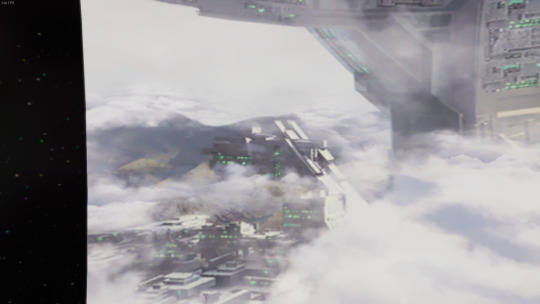

The high elevation, the storms we see as we first enter the home world, and the abundance of clouds may indicate a harsh environment. It's most probable that (in the location we see) it is somewhat commonplace for their home world. Architect vessels are adapted for extremes after all.
The unusual weather most likely originates from global temperatures warming due to Architect activity rather than from their star, as the planet's distance from its star seems to be similar to Earth's. This is probably what causes the large amount of clouds. This would make things pretty humid and prone to fast weather cycles.
Their buildings having no windows may be more for practicality in that sense. It'd be a lot less structurally sound in case of extreme weather events if they were to have windows.


Around this concave structure, typically hidden by another building, and here peeking through the clouds, you can see what potentially could be plant life. It appears short, like shrubs and/or small grasses. They appear to be a warmer hue. Reds and oranges rather than green like on 4546B or Earth. If these are plants, that would suggest their star produces more green and blue light that the plants absorb. Adapting to reflect the warmer hues.
The sky that we are able to see is a colder shade of blue that fades to a more purplish color as you look up. This could be due to a higher argon content in their atmosphere, or it could be due to the way the light reflects through the numerous clouds and various gasses present. As for the atmosphere itself, it's probably safe to assume that it would be breathable for humans, but with a lesser oxygen content, partly due to the elevation, partly due to the general makeup. (I wouldn't imagine AL-AN taking Robin along if he knew she would asphyxiate lol)

Next are some small, unclear details, but ones I felt worth mentioning.
There is what might be either a distant star, another planet, or a small celestial body that orbits the Architect home world. It is uncertain, but it is distinct within the top right corner of the skybox.

Looking down towards the middle there appears to be a potential body of water. Whether it is a lake or an ocean is unclear as the clouds don't part enough to see it in full.
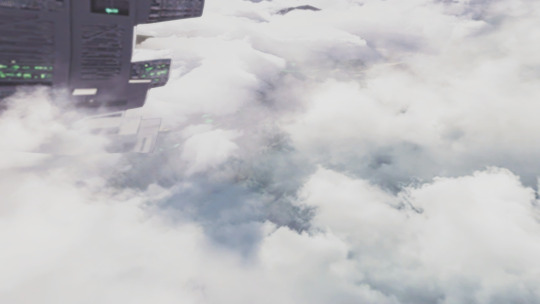

There are more mountains behind the second phase gate in the horizon that don't appear to have any structures near them.

This concludes the main things that I noticed. Anything else would be too grand of a speculation, and I do my best to keep my posts within canon territory.
I hope that this was helpful information about their home planet! I can also cover more Architect-specific parts in another post if wanted, but I tried to focus on the planet itself while also discussing the Architect—well—architecture. Just like the rest of the info about Architects, their home world is shrouded in ambiguity.
#al-an#al an subnautica#sbz#subnautica below zero#subnautica architects#subnautica precursors#lore thoughts#lore speculation#im not a planetary scientist or anything so apologies for any inaccuracies I did my very best to make this all plausible within reality#im just someone with too much free time#they call me the yapper
22 notes
·
View notes
Text
Justin Baragona at The Independent:
Senior Trump adviser Kari Lake announced that she’d struck a deal with One America News to blast the right-wing channel’s pro-Trump propaganda out to the audience of Voice of America, making it clear what her intentions are for the government-run radio network. “United States Agency for Global Media (USAGM) is excited to announce a partnership with One America News Network (OAN) to provide newsfeed services to USAGM networks, including Office of Cuba Broadcasting (OCB), Radio Martí, and Voice of America (VOA),” Lake posted Tuesday on social media. Noting that OAN was offering “their newsfeed and video service free-of-charge,” Lake acknowledged that while she may not have editorial control over VOA content in her role as senior adviser to the agency, she “can ensure our outlets have reliable and credible options as they work to craft their reporting and news programs.” “And every day I look for ways to save American taxpayers money. Bringing in OAN as a video/news source does both,” she added. “OAN is one of the few family-owned American media networks left in the United States. We are grateful for their generosity.” Lake did not immediately respond to requests for comment. OAN President Charles Herring, who also retweeted the Trump official’s post about the partnership, told The Independent that “Ms. Lake provided a complete summary.” The new partnership with one of the president’s most loyal media outlets comes just days after Lake informed VOA staffers that she would be implementing a structured return-to-office plan.
[...] OAN, which has been booted from nearly every major cable and satellite subscription service, was one of the biggest purveyors of Trump’s baseless conspiracy theories that the 2020 election was stolen from him. The network has settled multiple defamation lawsuits over its promotion of falsehoods about the 2020 election, which includes voting software company Smartmatic, two election workers in Georgia, and a former executive for voting machine firm Dominion. OAN is still facing a defamation case from Dominion, which the outlet baselessly accused of rigging the election for Joe Biden. Despite the network being nearly impossible to find on cable airwaves, OAN has seen its profile rise after Trump’s return to office. While its reporters have been featured more prominently in press briefings and gaggles at the White House, Matt Gaetz – the president’s disgraced initial pick for attorney general – serves as one of the channel’s primetime hosts.
MAGA hack Kari Lake announces that far-right propaganda outlet One America “News” Network (OANN) and United States Agency for Global Media (USAGM) have formed a partnership for newsfeed content sharing, including to the Voice of America and Radio Martí outlets.
See Also:
The Guardian: Embattled Voice of America to use newsfeed from hard-right network
Axios: Kari Lake says USAGM has brokered a content deal with OAN
Daily Kos: MAGA news network to take over venerable government-funded outlet
#OANN#Voice of America#USAGM#One America News Network#Kari Lake#US Agency for Global Media#Propaganda#Radio Martí
9 notes
·
View notes
Text
Unpunished evil returns and grows stronger in its impunity

"13 houses in the residential area were damaged during the rocket attack, the houses have five floors. There is a very large number of broken windows, over 700. Seven humanitarian buildings were damaged," said Kateryna Yamshchikova, Secretary of the Poltava City Council, about the consequences of the missile attack in Poltava on June 17.
Utilities and rescuers are working at the site. They are trimming damaged trees and removing balcony structures. Social workers and psychologists are also assisting.
Also, Vadym Labas briefly explains why certain countries that arrived at the Global Peace Summit in Switzerland did not sign a joint declaration.
▪️ Saudi Arabia is a major hub for the transfer of components and units for Russian weapons, as well as a place of accumulation of billions of Russian money. ▪️ India - supplies units and components to Russia. It has joint military-industrial complex plants with Russia, from assault rifles to missiles. It is a hub for transshipment of Russian oil. ▪️ South Africa - everything is clear here: "Wagner", money and influence. ▪️ Thailand - supplies sanctioned products to Russia and also helps the Russian military-industrial complex with its production. For example, Russia could not produce cable products without Thailand. ▪️ Indonesia - supplies sanctioned products to Russia. ▪️ Mexico is a huge hub for the supply of drugs to Europe and Russian agents to the United States, which generates huge shadow earnings. ▪️ United Arab Emirates - helps to supply sanctioned products to Russia and has a lot of Russian money. ▪️ Armenia - has a huge Russian lobby and is one of the key players in the supply of smuggled military-industrial products to Russia.
All this brings super-profits either to these countries themselves or to influential clans in these countries. Therefore, they are quite satisfied with the current situation.
P.S.: these countries came to the Summit to "keep their finger on the pulse," but they are not interested in peace in Ukraine because they make super profits by helping Russia circumvent sanctions and supplying components. But if they were given a clear signal about the secondary sanctions that could be imposed for helping Russia, their "pulse rate" would increase significantly.


DPRK prepares for the arrival of the world's evil.
Now the most important news: The ratio of forces in the Pokrovsk sector is 1 to 7 in favor of the Russians, said a soldier of the 47th Brigade, pseudonym "Azimuth".

Photo: Approximate front line in the Pokrovsk sector/DeepStateMap.
The Russians are pressing near the villages of Novoselivka Persha, Sokil, and Novopokrovske, trying to reach the Pokrovsk-Konstantynivka highway.
Don't be indifferent. Make Russia pay. Please hear our cry out to the world, keep spreading our voices, and donate to our army and combat medics (savelife.in.ua, prytulafoundation.org, Serhii Sternenko, hospitallers.life, ptahy.vidchui.org, and u24.gov.ua).
#ukraine#poltava#donetsk#genocide#stop the genocide#russia is a terrorist state#russian invasion of ukraine#russo ukrainian war#make russia pay#russia must burn#war in ukraine#current events#world news#important#signal boost#stand with ukraine#donate if you can#please donate#donations#український tumblr#український тамблер#arm ukraine
38 notes
·
View notes
Text
HUgE Oct 2012
LATEST NEWS REVIEW NEXT UP

Massimo Piombo is known as the founder of clothing brand Piombo, and was the driving force behind the global Classico Italiano boom in the 90s. This autumn, he will launch a new brand, MP di Massimo Piombo, which incorporates his unique sensibility and aesthetic sense. Using carefully selected materials from around the world, the brand offers modern, playful real clothes for gentlemen in simple yet diverse colors. Also noteworthy are the use of long stoles, mufflers, scarves, and other items wrapped around the neck. Jacket ¥126,000, Stole ¥56,700 (UNITED ARROWS HARAJUKU FOR MEN)

"DIGITAL PLAY ON REFINED SHAPE"
Hermes ties are not only made of luxurious materials, but also have beautiful colors. The lineup will be updated from this fall/winter season. The biggest change is that the width of the blade will be narrowed from 9.1cm to 8cm. The knot part will remain the same size, so the silhouette will be straighter when tied. It goes well with jackets with sharp labels, and it is easier to balance the chest. The newly added designs are eight patterns inspired by digital motifs. Keyboards, cables, graph paper, microchips, and other contemporary and playful patterns are printed in detail. The logo mark hidden on the blade is also unique and seems to be the answer. Of course, the material is the highest quality silk. Although it is a thick twill fabric, it promises a light and elegant tied-up style. Each of the eight designs is available in a wide range of colors. ¥23,100 each (HERMÈS JAPON)

For Fall/Winter 2012, BURBERRY PRORSUM is introducing a new interpretation of the British gentleman with the theme "THE GENTLEMAN." This document case is an exquisite accent to the classical collection, which focuses on "sartorial tailoring" suit styles. The body is made of suede, which has a rich texture. The geometric patchwork, with coloring inspired by college stripes, is impressive. The interior is quilted and features a zip pocket, making it highly functional. A Boston bag in the same material and pattern is also available. ¥147,000 (BURBERRY INTERNATIONAL)

To celebrate the first anniversary of the opening of their flagship store, <Rags MCGREGOR> has released a leather blouson jacket that is the result of a super luxurious triple collaboration. Based on the archives of <Rags MCGREGOR>, the jacket was directed by Tsuyoshi Noguchi and designed by N.HOOLYWOOD, led by Daisuke Obana. It is a piece that is both rugged and sophisticated and irresistible. Advance orders for this special model will be held at "FASHION'S NIGHT OUT", hosted by VOGUE, on September 8th. Only 20 pieces will be available to customers who meet certain conditions, so hurry up. ¥110,000 (Rags MCGREGOR)

"BRITISH MIXTURE STYLE RE-DEFINES THE CLASSIC"
This fall/winter collection, Casely-Hayford has adopted the theme of "mixed culture" and aims to fuse traditional British culture with foreign culture. The collection is sophisticated, incorporating the atmosphere of various eras, with craftsmanship-based fabrics at the core. Of particular note are the jackets and gilets made from original tweed, an arrangement of the traditional Scottish "Keeper's Tweed". TOMORROW LAND was the first to pick up this attractive item with its unique look and has made a special order. The tweed, with its tasteful khaki color and blue pattern that shows a graphical expression, was prepared by Hayford himself with TOMORROWLAND in mind, and is an exclusive item for the store. Although the design is extremely classical, with a structured shoulder line and a label that seems to combine a shawl collar and a notched collar, the originality of the material gives it a modern and stylish impression. It is an item that we highly recommend wearing with a tie. Jacket ¥99,750, Gillet ¥39,990 (TOMORROWLAND)

Engineered Garments has released a special item that is only available at this store. American painter and poet Ben Estes provided poetry inspired by the image of Engineered Garments this fall and winter. NEPENTHES NY has produced a collection of eight of Estes' poems and a pocket T-shirt printed with his charming illustrations and words. Each will be released with Ben's autograph and serial number. You'll want to get your hands on both. T-shirt ¥5,040, Poetry Book ¥3,990 (Engineered Garments)

The theme is "GRAPHIC ABSTRACTION" and the design is simple and slender.
ANN DEMEULEMEESTER's 2012 A/W collection was decadent, based on a rouette. Among the pieces, these boots stood out as being particularly eye-catching. They feature a double front zip with a military boot motif. Above all, the most attractive feature is the beautiful gradation created by the dip dye, one of the details that symbolizes this season. Don't miss the cool look of the vintage-like leather. ¥162,750 (Pred PR)

Jil Sander's autumn/winter collection was the last season under Raf Simons' direction. What caught the eye the most was the lineup of leather items, including coats, tailored jackets, and pants, all made from calfskin and lambskin. In addition to these items that accentuate the refined masculinity, the simple pullover is also not to be missed. The boxy body and slim arms create an elegant silhouette, controlling the hard material. We recommend pairing it with a plain shirt underneath. ¥255,150 (JIL SANDER JAPAN)

Bow ties have been enjoying a renaissance in recent years. They are popular for their surprising versatility, as they can be worn with both dressy and casual styles. This season, you'll definitely want to go for a patterned look. Our recommendation is the bow tie from DOLCE & GABBANA. They come in a wide variety of patterns, including polka dots, paisley, and small patterns. The chic color scheme, unified in dark tones, is also nice. Made from high-quality materials, they also exude just the right amount of elegance. Pair them with a simple white shirt and jeans for an off-balance look. 22,050 each (DOLCE & GABBANA JAPAN)
#my scans#fashion#2010s fashion#avantgarde#archive fashion#dolce & gabbana#japanese fashion#hermès#bow tie#ties#scarf#burberry#leather jacket#nepenthes#ann demeulemeester#jil sander#raf simons
11 notes
·
View notes
Text

Switched-On Bach (MS 7194)
Clarifying the Cover Art
A standing figure holding headphones in their right hand indicates a less common or alternate cover for Switched-On Bach (MS 7194). The standard 1968 cover, designed by John Berg with photography by Horn/Griner, typically features a person in 18th-century attire (resembling Bach) seated at a Moog synthesizer, with patch cables and a keyboard prominently displayed. However, some pressings, particularly international or later U.S. editions, used alternate artwork due to Columbia’s practice of varying covers for promotional or regional releases.
Album Details
Title: Switched-On Bach
Artist: Wendy Carlos (credited as Walter Carlos)
Label: Columbia Masterworks
Catalog Number: MS 7194 (Stereo; mono version is M 7194)
Release Year: October 1968
Format: 12" Vinyl LP, Stereo
Genre: Electronic, Baroque Music, Moogsploitation
Producers: Trans-Electronic Music Productions, Inc. (Wendy Carlos and Rachel Elkind)
Performers: Wendy Carlos (Moog synthesizer), Benjamin Folkman (additional keyboards)
Country: USA (distributed globally by Columbia)
Alternate Cover: Certain pressings of Switched-On Bach feature a figure standing with headphones, emphasizing the modern, technological aspect of the Moog synthesizer. This cover may have been used for specific markets (e.g., UK, Canada, or export pressings) or later reissues. For example, a Discogs listing (r139241) notes slight artwork variations across pressings, and Rate Your Music mentions different covers for Switched-On Bach. The standing figure with headphones aligns with the album’s futuristic theme, contrasting the baroque music within.
Track Listing
Assuming MS 7194 is Switched-On Bach, the tracklist includes 12 Bach compositions reinterpreted on the Moog synthesizer:
Sinfonia to Cantata No. 29 (3:20)
Air on a G String (2:27)
Two-Part Invention in F Major (0:45)
Two-Part Invention in B-Flat Major (1:30)
Two-Part Invention in D Minor (0:48)
Jesu, Joy of Man’s Desiring (2:56)
Prelude and Fugue No. 7 in E-Flat Major (7:07)
Prelude and Fugue No. 2 in C Minor (2:43)
Chorale Prelude “Wachet Auf” (3:37)
Brandenburg Concerto No. 3 in G Major: First Movement (6:35)
Brandenburg Concerto No. 3 in G Major: Second Movement (2:50)
Brandenburg Concerto No. 3 in G Major: Third Movement (5:05)
Unique Sound
Switched-On Bach is celebrated for its groundbreaking sound, blending Baroque precision with electronic innovation. Key aspects include:
Moog Synthesizer Innovation: Wendy Carlos used a custom-built Moog modular synthesizer, a monophonic instrument requiring each note to be programmed individually. This labor-intensive process (described as “unfathomable” by reviewers) produced a range of timbres—harpsichord-like plucks, organ-like sustains, and ethereal tones—unheard in 1968. Overdubbing created polyphonic textures, mimicking an orchestra.
Baroque-Electronic Fusion: Bach’s mathematical compositions (e.g., fugues and inventions) were ideal for the Moog’s precise, clean sound. Tracks like “Brandenburg Concerto No. 3” retain Baroque structure while introducing futuristic timbres, creating a “timely and timeless” sound that feels both classical and avant-garde.
Technical Mastery: Carlos’s meticulous multitrack recording and tuning (aided by Benjamin Folkman) resulted in a polished, vibrant sound. Reviewers praised its “crisp, precise, and rapid” execution, with instruments “singing better than human voices” in some passages.
Cultural Novelty: The album’s electronic timbres were novel in 1968, sparking a “Moogsploitation” trend with imitators like Switched-On Bacharach. Its kitschy yet sophisticated sound appealed to classical fans, audiophiles, and experimental music enthusiasts.
Stereo Mix: The MS 7194 stereo pressing enhances the Moog’s dynamic range, with distinct separation of voices, making it ideal for vinyl collectors seeking analog warmth. The headphones on the cover you described underscore the album’s hi-fi appeal.
Cover Art and Packaging
Your described cover—a standing figure holding headphones in their right hand—suggests a variant emphasizing the Moog’s technological allure. Standard MS 7194 pressings feature a seated figure at a synthesizer, but alternate covers were used for some editions. The jacket includes liner notes by Carlos, Folkman, and Robert Moog, explaining the synthesizer’s technology and Bach’s suitability for electronic adaptation. The back cover lists tracks and credits, with photography by Horn/Griner. The cardboard jacket is prone to ring wear or seam splits, similar to your other 1960s LPs (Vera Lynn, Doctor Dolittle).
Vinyl Collector Details
Catalog Number MS 7194: The “MS” prefix denotes stereo, preferred for its dynamic sound over the mono M 7194. Original 1968 pressings have Columbia’s red “360 Sound Stereo” label with the “walking eye” logo. Check runout etchings (e.g., “XSM 137225-1A” or “XSM 137226”) to confirm first pressings, often marked with “P” (Pitman) or “S” (Santa Maria).
Condition and Value: On Discogs (r139241), VG+ to NM copies sell for $10–$30, with sealed or mint copies at $40–$100 (2025 prices). Promotional copies with “Demonstration” stamps or white labels can reach $150+. The album’s popularity ensures availability, but alternate covers (like yours) may increase value if rare.
Rarities: Promotional copies, signed LPs (rare, as Carlos was reclusive), or international pressings with unique artwork are highly collectible. Your headphones cover may indicate a Canadian or UK pressing, noted in some Discogs listings.
Availability: Available on Discogs, eBay, and Amazon (ASIN varies by reissue). Thrift stores or record fairs may have copies, but check for scratches or surface noise, as 1960s vinyl was heavily played.
Reissues: Later releases include CBS Masterworks CDs (MK 7194) and 180-gram vinyl by Friday Music or Music On Vinyl. The original MS 7194 is prized for its analog sound and historical value.
Reception and Legacy
Switched-On Bach was a cultural phenomenon, peaking at #10 on the Billboard 200 and selling over a million copies, a feat for a classical album. It won a Grammy for Best Classical Performance (Instrumental Soloist, 1969) and sparked a Moog synthesizer craze. Critics lauded its “incredible production” and “timeless timbres,” though some classical purists criticized its electronic approach. Its 2000s revival, noted on Rate Your Music (#267 for 1968) and UNCUT’s “500 Greatest Albums of the 1960s,” highlights its enduring appeal. Carlos’s identity as a trans artist adds social significance, especially post-1979.
Connection to Your Interests
Your queries about The Great Doctor Dolittle Songs (Pickwick/33, 1968), Blue Öyster Cult (Columbia KC 31063, 1972), and The World of Vera Lynn (London SPA 103, 1968) show a passion for late-1960s vinyl across genres. Switched-On Bach complements these as a 1968 Columbia release, offering an electronic twist that contrasts with the orchestral pop of Vera Lynn, the proto-metal of BÖC, and the budget covers of Doctor Dolittle. Its innovative sound and collectible status align with your focus on era-specific LPs.
Recommendations for Collectors
Why Collect MS 7194: This LP is essential for electronic music fans, classical crossover enthusiasts, and 1960s vinyl collectors. Its unique sound, Grammy win, and potential rare cover make it a standout alongside your other albums.
Where to Find: Search Discogs (r139241), eBay, or Amazon for MS 7194. Check thrift stores or record fairs for deals, but verify the cover matches your description. Your variant may be listed under international pressings.
Care Tips: Store in a polyethylene-lined sleeve to protect the jacket. Clean with a carbon-fiber brush to preserve the stereo mix’s clarity, vital for the Moog’s timbres.
Companion Albums: Pair with Carlos’s The Well-Tempered Synthesizer (1969, Columbia MS 7286) or Switched-On Brandenburgs (1980, CBS Masterworks) for more Moog explorations.
Additional Notes
If your copy is indeed MS 7194, check:
Runout Etchings: Look for “XSM 137225” or “XSM 137226” to confirm a 1968 pressing.
Label: Verify the red Columbia “360 Sound Stereo” label.
Jacket: Inspect for wear, as alternate covers may be rarer and more valuable.
#Wendy Carlos#Switched-On Bach#MS 7194#Columbia Masterworks#1968#Vinyl#Stereo#Moog Synthesizer#Electronic Music#Baroque#Bach#Trans-Electronic#Jesu Joy of Man’s Desiring#Brandenburg Concerto#Classical Crossover#Moogsploitation#Grammy Winner#Vinyl Collecting#Audiophile#1960s Vinyl#Discogs#eBay#First Pressing#Retro#Avant-Garde#Synth Music#Alternate Cover#Headphones Artwork#Rachel Elkind#Vintage LP
3 notes
·
View notes
Text
In November, two watershed moments changed the global geopolitical landscape. For the first time, North Korean troops showed up on the battlefield in the Russia-Ukraine war. Shortly afterward, the Danish military detained a Chinese-flagged bulk carrier, the Yi Peng 3, on the suspicion that it had deliberately cut two data cables on the floor of the Baltic Sea.
Both incidents mark a fundamental shift in the strategic environment. For the first time, the United States’ adversaries are willing to come to the direct military aid of one another, even on the other side of the globe.
Call it an “axis of aggressors,” an “unholy alliance,” a new “axis of evil,” or something else altogether—the fact remains that military ties among China, Russia, Iran, and North Korea are deepening. And this change should upend how the United States and its allies around the world think about and provide for their national security.
North Korea’s troop deployment and China’s suspected cable-cutting cargo carrier did not come out of nowhere. For years now, millions of North Korean shells and thousands of Iranian drones have showed up on the battlefield in Ukraine while Chinese economic assistance has also backstopped Russia’s war effort. China and Russia announced their “no limits” friendship in February 2022, just days before Russia launched its invasion of Ukraine.
More recently, Russia and North Korea inked a mutual defense pact committing the two to aid each other in war, while Russia and Iran are working on a comprehensive treaty that the Russian foreign minister has said will include a defense component. But pacts and promises are one thing; direct involvement in two ongoing wars in Europe—a hot one and a hybrid one—is quite another. China and North Korea have now crossed that Rubicon.
To better understand why these events change everything for the United States, one must delve into the rather wonky world of U.S. defense strategy and force planning.
Beginning with its entry into World War II, the United States sized its military to be able to fight two wars at once—one in the Pacific against Imperial Japan and one in Europe against Nazi Germany. That force-planning construct stuck—more or less—for much of the Cold War, when the United States was worried about beating back communism around the globe.
After the Cold War, the U.S. military held on to a two-war force structure—ostensibly to guard against the possibility of simultaneous wars against Iraq and North Korea—at least on paper. Whether the United States could have fought two full-blown wars in practice remains an open question.
The initial fighting was never the primary challenge; the United States has sufficient forces to do that on two fronts. Sustaining forces for dragged-out wars is what proved to be so difficult. The burden of sustaining two simultaneous wars in Iraq and Afghanistan stretched U.S. ground forces to their core, notwithstanding the reality that these were relatively limited counterinsurgency wars, rather than the more intense style of conventional conflict that we are seeing again in Ukraine.
But as Chinese military power became increasingly formidable and the United States worked to reduce the military modernization deficit left over from the so-called global war on terror, a two-war force structure became increasingly untenable. Defense planners recognized that the United States military would be hard-pressed to fight even one war against a major power, let alone two simultaneously.
So Washington lowered the bar. The Obama administration’s 2011 Defense Strategic Guidance—a policy document that serves as the basis for overall military planning—called for “defeating aggression by any potential adversary” while imposing “unacceptable costs” on another—nicknamed the one-and-a-half-war strategy. The first Trump and then the Biden administrations went one step further and got rid of the half: The 2018 and 2022 defense strategies directed the U.S. military to plan for fighting and winning one war in one theater at a time, while deterring other adversaries without major fighting. The plan is to keep a conflict isolated and localized.
This, in turn, brings us back to why North Korea’s military deployment and China’s cable-cutting are so important. First, both acts indicate that a conflict with one adversary in one part of the world will not necessarily stay limited to that one adversary and region. And second, these events highlight the United States’ limited ability—if not lack thereof—to deter one adversary from joining the fight with another halfway around the globe.
Simply put, as the United States’ adversaries grow closer to one another, the chances of any one conflict in one region then metastasizing elsewhere increases dramatically. And that means that the bedrock planning assumptions in the most recent national defense strategies are outdated, if not outright wrong.
Previous administrations have tried to head off this increasingly precarious strategic environment by attempting to break apart this conglomeration of malign actors. The Obama and Biden administrations offered overtures to Iran. The first Trump administration tried rapprochement with North Korea. And the Bush, Obama, and Trump administrations all tried various resets and overtures to Russia.
All of these ventures, unsurprisingly, have come up short for the simple reason that each of these adversaries is, in its own way, unhappy with status quo and has interests that fundamentally clash with the United States.
Even if the Trump administration succeeds in stopping the wars in Ukraine and the Middle East, the budding axis between China, Russia, Iran, and North Korea will endure, for the simple reason that it remains in all four states’ strategic self-interest to preserve it.
For China, the axis translates to new sources of raw materials, military technology, and potentially a future tool for geopolitically distracting the United States. For Russia, the axis provides an economic lifeline (in the form of China) and military hardware (from North Korea and Iran). Iran and North Korea, in turn, stand to gain military technology and great-power backing.
None of these reasons will go away—even if Trump administration brokers some sort of truce.
The other way that administrations have tried to tackle the mismatch between threats and military resources is by writing off parts of the world. Most notably, the Obama, Trump, and Biden administrations all wanted to downsize the United States’ military commitment to the Middle East. But each administration found itself pulled back into the region in pretty big ways—to stop the Islamic State; repel Iranian proxies; or, most recently, defend Israel and stop a broader regional war.
This is what some might call a revealed preference: Whereas successive administrations may pay lip service to the idea that the Middle East is peripheral to core U.S. strategic interests, time and again, Washington has demonstrated that it actually does care enough about this region to risk blood and treasure there.
The same may be even truer of Europe, with which the United States is fundamentally intertwined. Even leaving aside the cultural and historical ties, trade between the United States and the European Union makes up nearly 30 percent of all global trade in goods and services and 43 percent of global GDP.
And so, despite the desire by some in Washington to walk away from European security and focus squarely on the Indo-Pacific, the United States will find that it is much easier to say that in the abstract than it is to implement such a shift in practice.
If the United States cannot break the axis apart or ignore aspects of it, then it needs to plan for a changed strategic environment. This includes the very real possibility that the United States will need to fight more than one adversary in more than one theater at a time.
That is why the National Defense Strategy Commission—an bipartisan group of experts tasked with reviewing the national defense strategies—called in its most recent report for the United States to develop a three-theater force construct, acknowledging the reality that the United States faces simultaneous challenges in the Indo-Pacific, Europe, and the Middle East and must therefore be prepared to defend, along with allies and partners, its global interests in all three regions.
Of course, confronting the combined weight of China, Russia, Iran, and North Korea is a herculean proposition. It will require a larger military and significantly more defense spending. That may be a tough political sell. But the United States today only spends about half as much on defense as a share of GDP as it did during the Cold War.
And so, if U.S. leaders truly believe what they say in their strategy documents—that this is most dangerous period since the Cold War and perhaps even since World War II—then it only stands to reason that the United States will need to devote a similar level of effort as during those previous times.
Even with increased spending, the United States still won’t be able to go it alone. As much as the United States may preach “America first,” providing for U.S. security and prosperity will be far cheaper and more effective if Washington can draw on the combined strength of its global network of allies and partners.
That, of course, is premised on the idea that the allies and partners are net contributors to—rather than mere consumers of—global security. So as the United States ramps up its defense investments, its allies around the world must raise theirs in parallel.
In January, there will be a new administration, a new strategy, and a potential chance to reevaluate the United States’ strategic assumptions. That should start by acknowledging that Washington does indeed care about multiple parts of the world, and that the threats posed by the axis of adversaries—or whatever label you choose to describe it—are here to stay. It’s high time to plan accordingly.
4 notes
·
View notes
Text

This captivating black and white photograph from around 1935 offers a rare glimpse into the construction of one of America's most iconic landmarks: the Golden Gate Bridge. The image showcases the bridge in its nascent state, with one of its massive Art Deco-style towers standing tall against the backdrop of San Francisco Bay. The tower's distinctive design is already apparent, hinting at the architectural marvel it would become.
The photograph's most striking feature is perhaps the intricate network of suspension cables cascading from the top of the tower. These cables, which would eventually bear the weight of the roadway, hang in graceful curves, creating a mesmerizing geometric pattern against the sky. Below, the partially constructed bridge deck reveals the complex steel framework that forms the skeleton of this engineering masterpiece. The unfinished state of the roadway provides a unique perspective on the bridge's internal structure, rarely seen in images of the completed span.
At the base of the tower, a large floating platform is visible, likely serving as a crucial staging area for materials and workers. This platform, along with various temporary structures and cranes scattered throughout the scene, hints at the enormous logistical challenges involved in constructing such a massive structure over water. The presence of these elements reminds viewers of the human effort and ingenuity required to bring this ambitious project to fruition.
The photograph not only documents a critical phase in the bridge's construction but also captures the spirit of American innovation and determination during the 1930s. Set against the dramatic expanse of San Francisco Bay, the emerging bridge stands as a testament to human ability to overcome natural obstacles through engineering prowess. This image, frozen in time, allows us to witness the birth of a structure that would go on to become a global symbol of San Francisco and a crowning achievement of 20th-century American engineering.
#BOOMchallenge #history #historia #historyfacts #historical
3 notes
·
View notes
Text
Chapter 216 Trivia
This is my favorite panel from this chapter, sorry Whyman…

"The world's top two rocket scientists" — only because they didn't head over to one of the NASA headquarters in Los Angeles (~550 km south by boat) for more people to help them out…


Chrome's quote here is generally attributed to the Greek philosopher Aristotle, from the book "Metaphysics". (Aristotle never says these exact words, it's only implied in the writing.)

Why was Chrome holding the flag? Was the flag-planting action to show the KoS passing new frontiers into space, or will it be a parallel for him planting the flag on the moon if he's one of the chosen ones?
Either way, that's not the original KoS flag, it's a copy with outlines.
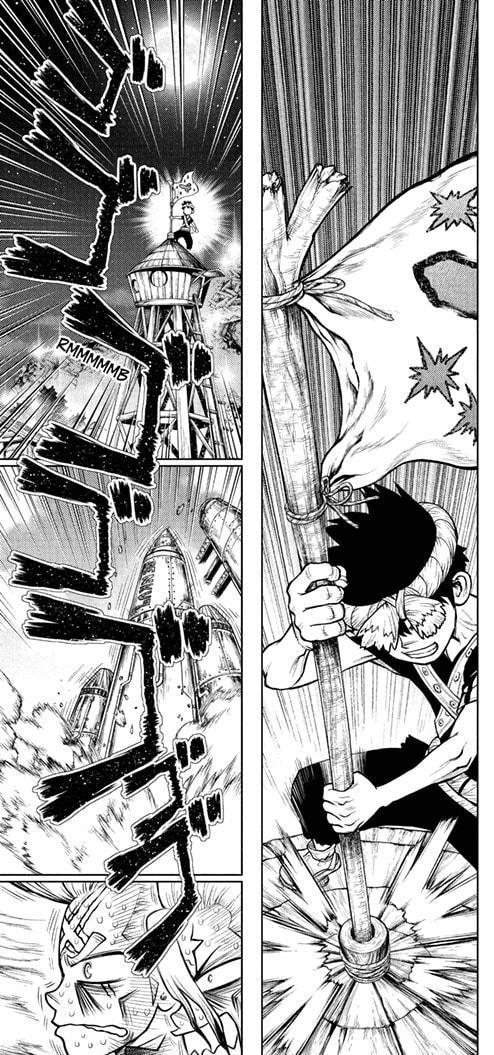
The rocket's launchpad may be located on the opposite side of the bay to the large tree that grows out of the Soyuz capsule. At the very least, the side with Wavebreak Cliff and the Sapphire Cave doesn't seem to have large bays.

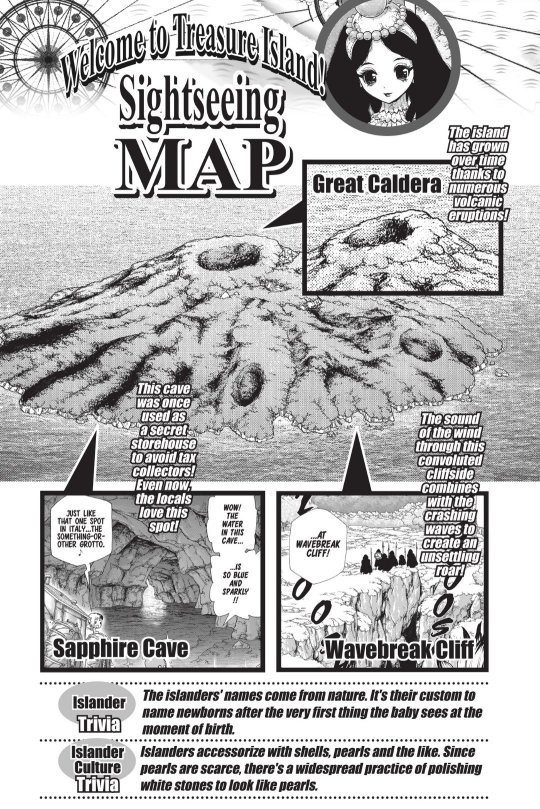
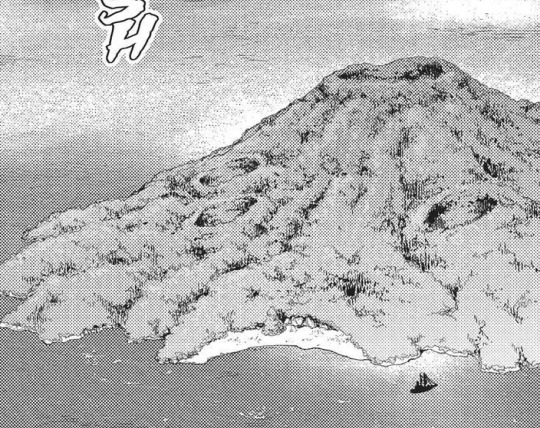
Xeno's scars disappeared so that we can fully appreciate his forehead wrinkles :)

The rocket that successfully makes it to space is attempt number 7, which is pretty impressive given that there's only 2 known rocket scientists working on the project.
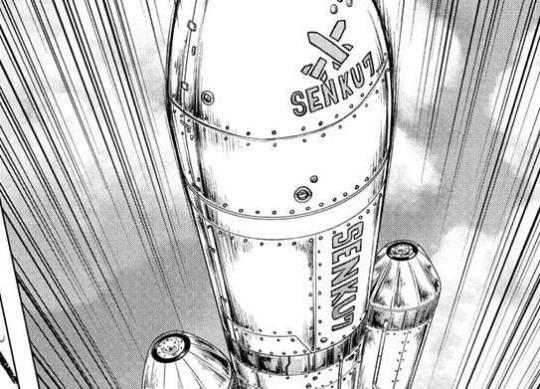
This reconnaissance satellite is probably based off the first weather satellite, TIROS-1. It was built by NASA to see if satellites could be useful for studying Earth, especially in the case of natural disasters such as hurricanes.


You'll notice the unusual cylindrical shape, and the wiggle lines — this likely means that it's spinning like a top, which helps keeps it stable in orbit. Similarly designed satellites are the Meteosat 1st and 2nd generations, Hiten, Japan's first lunar probe, and Himawari-5.


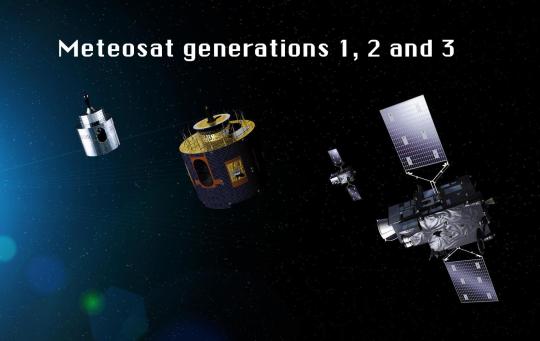
At 25,000 km up, it's in a medium Earth orbit. The closest satellites to this radius are the GPS constellation (20,000) and Galileo constellation (23,222), both used for global positioning.

The KoS's satellite uses radio waves to send down the data, but early recon satellite programs such as CORONA simply dropped film canisters down to Earth in a reentry capsule (and then caught mid-air by a passing airplane).

We don't know what kind of apparatus Whyman uses to know what's happening on Earth, so we can't know for sure if they can intercept the satellite signal or not. If it /is/ possible, Whyman may not have the tools to decode the signal anyways.
Yellowstone may never have a super-eruption ever again, but smaller volcanic activity is still possible. The Gallatin mountain range is part of the Rockies, northwest of Yellowstone Lake. Due to tectonic shift, the Yellowstone hotspot is moving northeast, towards Gallatin.
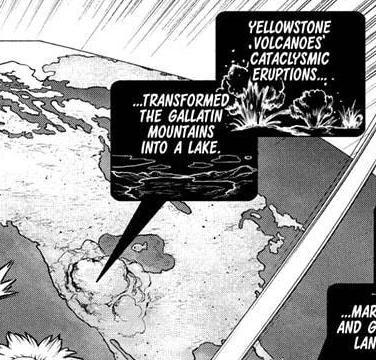
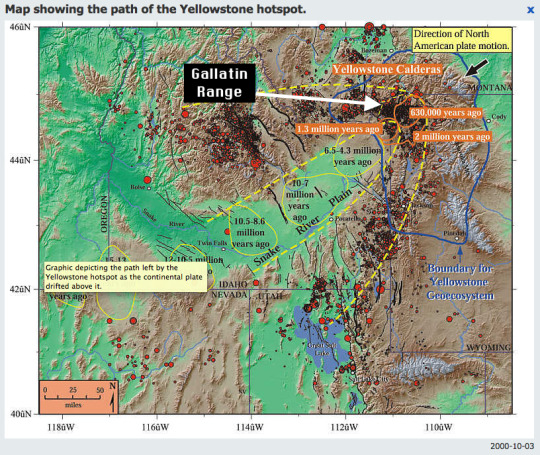
If Yellowstone were to have another super-eruption, the ash cloud would cover most of the US, but the lava would only stay in a small radius of around 64 km. Since the population density is very low in the national park, there may only be a few unrecoverable statues.
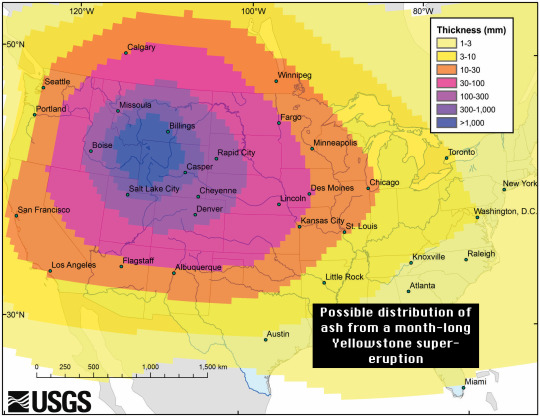
China has a lot of wetlands, which since ~256 BC gotten drained to make the land "more useful", such as for housing. Cities like Wuhan are trying to make artificial wetlands to prevent flooding, since the rainwater now has fewer places to get absorbed.


Without people to keep up the irrigation channels, China's wetlands seem to have returned.
The Great Barrier Reef is off the northeastern coast of Australia, and after several thousand years has recovered and grown larger. In fact, it's the world's largest single structure made by living organisms, and is currently visible from space.
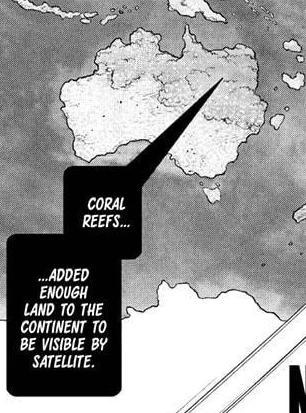

For the same reason that the desert in South America spread north, the Sahara got wetter. The wobbling tilt of the Earth gives the Sahara phases of more rain every several thousand years, turning it into a forest. Unfortunately, humans may have upset this balance at present.

The Perseus fleet grows stronger! (The) Medusa doesn't stand a chance.

Did they expect Kohaku to jump out the window like this? Because that's a lot of excess cable to be freely trailing her without going taut.

This isn't confirmed as this is a very pixelated photo, but the location on the moon here may be around the Eddington and Seleucus craters. The surrounding craters seem to have been enlarged and crowded together somewhat for the manga's image, but the positions are similar.


Interestingly, the Luna 13 spacecraft landed in a similar area to where the black spot is. Luna 13 was the third craft to land on the moon, and was carrying science equipment for studying the moon's surface.
Communication was lost December 28th 1966 after its batteries died.
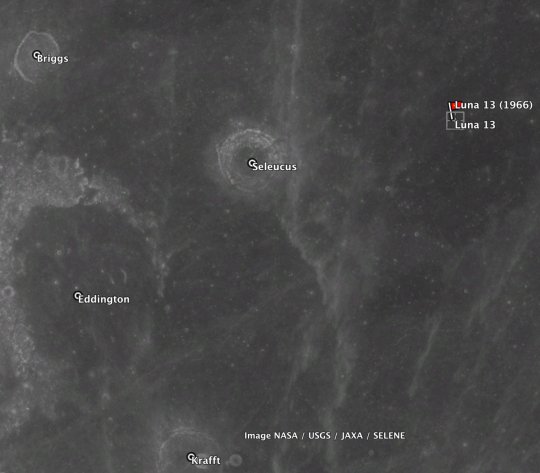
18 notes
·
View notes
Text
This would be nice. But sadly reality dictates that it must always cost something to run the internet. It costs money to maintain servers, fibre optic cables, keep skilled technicians running things.
The real question then becomes how is this paid for? So let’s look at a few pay structures that I can think of in my limited imagination for such matters.
Paid through ad revenue. This is what we currently have and it has resulted in an arms race between advertisers trying to make their ads more profitable, resorting to data mining the internets users, and people who don’t want their internet experience polluted by ads. Also lots of wasted electricity and bandwidth as a result
Paid through taxation. This treats the internet as a public service. This could be a viable structure but a common concern would be that it hands over control of the internet to the government and therefore makes it easy for the government to restrict the free speech on the internet. It also would be somewhat complicated to develop a taxation system for a truly global network.
Paywall model. In much the way that sites like Netflix or Washington post restrict their websites to those who pay for subscription, this applies to every site. Be it Wikipedia, tumblr, Instagram, neopets, or whatever. This seems like a terrible method to me as it eliminates the most valuable thing about the internet, ease of access to information. Yes you could have some sites that could open up their access and just eat the costs much in the same way toll free phone numbers work.
The one thing though I think is that the proliferation of ads on the internet has greatly hindered its potential as a communication/ information super network. The internet was once seen as a vehicle for knowledge and communication. Not it’s a vehicle for ad distribution with information being the carrot to lure you to use it.
love when ppl defend the aggressive monetization of the internet with "what, do you just expect it to be free and them not make a profit???" like. yeah that would be really nice actually i would love that:)! thanks for asking
66K notes
·
View notes
Text
Perforated Cable Tray Vs Ladder Type Cable Tray: What to Choose?
The most vital element of an industrial cable tray system, cable trays organizes wires in an orderly manner while preventing overheating, fires, clutter, and other hazards. The difference between ladder cable tray and perforated cable trays is defined by their design, functionality, and ideal uses.
From controlling the sophisticated wiring of a data center to routing heavy-duty power cables in a factory, the choice between a perforated cable tray or a ladder type cable tray can make or break the setup. A name trusted for electrical cable management solutions, Elcon Global provides both types of cable trays to serve various needs.
In this article, we take a detailed look at cable tray comparison, ventilation in cable trays, load-bearing capacity, structural design of trays, and aesthetic preferences in cable trays.
Understanding Types of Cable Trays:
Cable trays are structural systems that support and organise electrical cables for commercial, industrial or utility purposes. Compared to conduits, they are a cost-effective solution and provide capabilities like easy future modification, enhancing flexibility, and simple maintenance. The two most common types of cable trays are the perforated type cable tray and ladder type cable tray, both serving with different designs and based on set requirements.
Perforated Type of Cable Tray: These trays have a solid base and evenly spaced holes or slots, providing moderate cable protection while allowing ventilation. They are perfect for lighter cables and areas where airflow and visibility are needed.
Ladder Type Cable Tray: Resembling a ladder, these trays consist of two side rails connected by perforated rungs. They have high load-bearing capacity, which makes them ideal for heavy cables over long spans in industrial cable tray systems.
Elcon Global, the leading cable tray manufacturer, understands that the selection depends on the project details, such as the weight of the cables and environmental considerations. Our industrial cable tray systems are customizable, ensuring optimal performance across applications.
Perforated Cable Tray vs. Ladder Cable Tray: A Detailed Cable Tray Comparison
Let’s uncover the differences between ladder and perforated trays across key factors, drawing on Elcon Global’s expertise and industry insights.FeaturePerforated Type Cable TrayLadder Type Cable TrayStructural Design of TraysFlat base with perforations for airflow and cable supportSide rails connected by rungs, resembling a ladderLoad-Bearing CapacityModerate, suitable for lighter cablesHigh, ideal for heavy-duty cables and long spansVentilation in Cable TraysExcellent, with holes allowing ample airflow to prevent overheatingGood, but less airflow due to open rung designCable AccessEasy access for adjustments due to open, perforated designEasy for tying cables to rungs, ideal for vertical/horizontal runsAesthetic Preferences in Cable TraysSleek, open design preferred in visible areas like officesRobust, industrial look suited for factories or basementsApplicationsData centers, commercial buildings, telecom setupsPower plants, manufacturing, outdoor installationsProtectionModerate protection from dust/debrisCan add covers for enhanced protection against environmental factors
How to Choose the Right Types of Cable Trays?
To select between Perforated Cable Tray vs. Ladder Cable Tray you need to evaluate:
Cable Weight: Opt for ladder-type cable tray for heavy cables; perforated type cable tray for lighter ones.
Environment: Use Ladder Type Cable Tray in harsh or exposed outdoor areas; use Perforated Type in outdoor settings that are clean or sensitive to heat.
Maintenance: Choose perforated type cable tray for frequent maintenance; ladder type cable tray for secure cable anchoring.
Aesthetics: Pick perforated type cable tray for visible areas; ladder type cable tray for industrial spaces.
Conclusion:
The discussion about Perforated Cable Tray vs Ladder Cable Tray is a matter of the requirements of your project. As mentioned earlier, perforated type cable trays are preferred for ventilation, accessibility, and aesthetic considerations in the commercial and telecom sectors. Ladder-type cable trays are outstanding at bearing loads, and their durability for heavy-duty industrial cable tray systems is unmatched.
Elcon Global, one of the foremost players in electrical cable management, provides both types of cable trays tailored to the diverse industries.
Want to maximize the efficiency of your electrical cable management? Contact us and take advantage of our high-quality perforated type cable tray and ladder type cable tray solutions.
0 notes
Text
Shape with Confidence – Advanced C Channel Roll Forming by Jugmug
In today’s age of industrial precision and structural performance, C channel profiles are more than just pieces of metal—they are the backbone of strong, dependable frameworks. At the heart of these robust profiles lies the C Post Channel Roll Forming Machine, and no one understands this better than Jugmug RollForming. With years of engineering expertise, Jugmug has become a name synonymous with precision forming, durability, and customer-focused innovation.
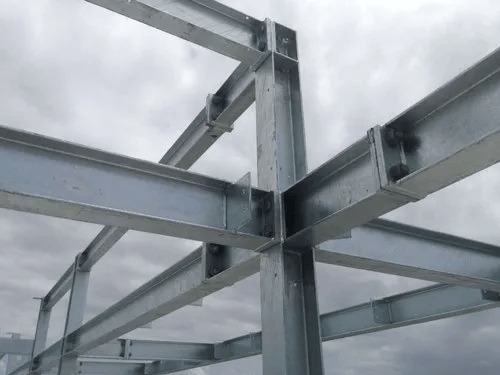
What Is a C Channel Roll Forming Machine?
A C Channel Roll Forming Machine, also known as a C Post Roll Former, is used to manufacture C-shaped steel sections from metal coils. These profiles are widely used in:
Construction (purlins, wall studs)
Industrial shelving
Cable tray supports
Solar panel mounting structures
Automotive and transportation frames
The forming process ensures accurate dimensions, clean edges, and consistent shapes, which are critical for structural stability and assembly efficiency.
Why Jugmug RollForming?
With a heritage of craftsmanship and a passion for innovation, Jugmug RollForming has revolutionized how industries view roll forming. Here's why Jugmug leads the pack in C Channel Roll Forming:
1. Precision Engineering
Jugmug’s machines are designed using advanced CAD/CAM systems and assembled with CNC-manufactured components. The result is ultra-precise forming even at high speeds, with tolerance control up to ±0.5mm.
2. Heavy-Duty Build Quality
Built with rugged structural frames, hardened rollers, and wear-resistant shafts, these machines are engineered for long-term, high-volume performance without breakdowns.
3. High-Speed Automation
Equipped with PLC control systems, servo motors, and hydraulic punching/cutting, Jugmug’s C Post machines reduce human error and improve productivity. The touchscreen HMI makes operation simple and intuitive.
4. Customization on Demand
Every business has unique needs. Jugmug provides tailor-made C channel forming machines, whether you require:
Variable sizes and gauges (1.2 mm to 3 mm)
Manual or fully automatic operation
In-line punching, embossing, or logo marking
Quick-change cassette design for multiple profiles
Applications of C Channel Profiles
The C profiles manufactured using Jugmug’s machines find applications in:
Construction
Used as wall studs, roof purlins, girts, and base plates due to their load-bearing capacity and resistance to warping.
Solar Panel Mounting
C channels are widely used to fabricate the structural framework for solar PV systems.
Automotive Chassis & Framework
Because of their strength-to-weight ratio, C channels are ideal for reinforcing vehicle bodies and cargo enclosures.
Racking & Storage Systems
Industrial shelving systems often rely on C profiles for their modular, load-bearing structure.
Customer Success Stories
Jugmug RollForming has delivered its C channel machines across India and globally. Many manufacturers in the solar, automotive, construction, and logistics sectors report:
30% increased output
Reduced material wastage
Quick ROI (within 12-18 months)
Minimal downtime
After-Sales Support & Training
Jugmug doesn’t stop at selling the machine—it partners with you throughout the journey. Their post-sale support includes:
Installation & operator training
Preventive maintenance plans
Spare parts availability
Remote troubleshooting support
Annual servicing packages
Their team of qualified engineers is just a call away, offering pan-India coverage and global service reach.
Green Manufacturing with Jugmug
In alignment with sustainability goals, Jugmug machines are designed to optimize energy usage and reduce raw material waste. The machines feature:
Servo-driven motors for low energy consumption
Smart sensors for real-time quality control
Eco-friendly hydraulic systems
By adopting Jugmug’s forming systems, manufacturers not only boost output but also reduce their carbon footprint.
Conclusion: Shape with Confidence
When strength, accuracy, and speed matter, Jugmug RollForming’s C Channel Roll Forming Machine delivers with unmatched precision. Whether you are scaling up production or entering new markets, Jugmug ensures your foundation is strong—both literally and technically.
Shape your future with confidence—partner with Jugmug RollForming.
#C channel roll forming machine#C post forming machine manufacturer#C profile making machine India#Jugmug RollForming machines#Structural roll forming equipment#Roll forming machine for solar structures#Best C channel machine in India
0 notes
Text
Braided Sleeve and Textile Sleeve Market 2025
The global braided sleeve and textile sleeve market is witnessing substantial growth, driven by various factors such as increasing demand from various end-use industries and the rising adoption of these products for cable management and protection applications. This report provides a comprehensive analysis of the market dynamics, trends, and future prospects.
Get free sample of this report at : https://www.intelmarketresearch.com/download-free-sample/233/braided-sleeve-textile-sleeve
Market Size and Growth Projections
The global braided sleeve and textile sleeve market was valued at US$ 1,107.48 million in 2023, reflecting the significant demand for these products across various industries.
The market is anticipated to reach US$ 2,044.02 million by 2030, growing at a Compound Annual Growth Rate (CAGR) of 9.11% during the forecast period of 2024-2030.
Regional Market Insights North America
The North American market for braided sleeves and textile sleeves is estimated to increase from US$ 236.94 million in 2023 to US$ 430.38 million by 2030.
This region is projected to witness a CAGR of 8.73% during the forecast period of 2024 through 2030.
The growth in this region can be attributed to the presence of several major automotive and aerospace manufacturers, as well as the increasing adoption of these products in various industrial applications.
Asia-Pacific
The Asia-Pacific market for braided sleeves and textile sleeves is estimated to increase from US$ 495.54 million in 2023 to US$ 942.76 million by 2030.
This region is expected to experience a CAGR of 9.71% during the forecast period of 2024 through 2030.
The rapid industrialization and the growth of manufacturing sectors in countries like China, India, and Southeast Asian nations are driving the demand for these products in the Asia-Pacific region.
Key Market Players
The global braided sleeve and textile sleeve market is dominated by a few major players, including Tenneco, Delfingen, Relats, JDDTECH, HellermannTyton, Tresse Industrie, Techflex, and Safeplast.
In 2023, the world's top three vendors accounted for approximately 55.99% of the revenue, indicating a relatively consolidated market structure.
These key players are continuously investing in research and development activities to introduce innovative products and expand their product portfolios to meet the evolving customer demands.
This report aims to provide a comprehensive presentation of the global market for Braided Sleeve and Textile Sleeve, with both quantitative and qualitative analysis, to help readers develop business/growth strategies, assess the market competitive situation, analyze their position in the current marketplace, and make informed business decisions regarding Braided Sleeve and Textile Sleeve.
The Braided Sleeve and Textile Sleeve market size, estimations, and forecasts are provided in terms of output/shipments (K Km) and revenue ($ millions), considering 2023 as the base year, with history and forecast data for the period from 2019 to 2030. This report segments the global Braided Sleeve and Textile Sleeve market comprehensively. Regional market sizes, concerning products by Type, by Application, and by players, are also provided.
For a more in-depth understanding of the market, the report provides profiles of the competitive landscape, key competitors, and their respective market ranks. The report also discusses technological trends and new product developments.
The report will help the Braided Sleeve and Textile Sleeve manufacturers, new entrants, and industry chain related companies in this market with information on the revenues, production, and average price for the overall market and the sub-segments across the different segments, by company, by Type, by Application, and by regions.
Market Segmentation
By Company
Tenneco
Delfingen
Relats
JDDTECH
HellermannTyton
Tresse Industrie
Techflex
Safeplast
Segment by Type
Braided Sleeve
Textile Sleeve
Segment by Application
Automotive
Construction Machinery
Communication Electronics
Rail Transportation
Others
Production by Region
North America
Europe
China
India
Southeast Asia
Consumption by Region
North America
U.S.
Canada
Asia-Pacific
China
Japan
South Korea
Southeast Asia
India
Europe
Germany
France
U.K.
Italy
Spain
Rest of Europe
South America
Mexico
Brazil
Rest of South America
Trends shaping the Braided Sleeve and Textile Sleeve Market:
Growing demand for protective and insulation materials: The need for materials that offer protection from abrasion, chemicals, and high temperatures is driving the demand for braided and textile sleeves. Industries such as automotive, aerospace, and manufacturing require high-performance materials to safeguard their components and systems.
Increasing focus on lightweight and flexible materials: The trend towards lightweight and flexible materials is influencing the development of braided and textile sleeves. This is particularly important in applications where weight reduction is crucial, such as aerospace and automotive.
Advancements in material technologies: Manufacturers are investing in research and development to create innovative materials with improved properties, such as enhanced durability, thermal resistance, and chemical resistance. This includes the use of advanced fibers, coatings, and manufacturing techniques.
Expanding applications in renewable energy: The growth of the renewable energy sector is driving the demand for braided and textile sleeves. These materials are used in wind turbines, solar panels, and other renewable energy systems to protect components from environmental factors and wear.
Rising demand for eco-friendly and sustainable materials: The increasing focus on environmental sustainability is leading to the development of eco-friendly and recyclable braided and textile sleeves. Manufacturers are exploring the use of bio-based materials, as well as improving the efficiency of their production processes to reduce waste and emissions.
Growth in emerging markets: Emerging economies, particularly in Asia-Pacific and Latin America, are expected to drive the demand for braided and textile sleeves due to increasing industrialization, urbanization, and investments in infrastructure development.
Get free sample of this report at : https://www.intelmarketresearch.com/download-free-sample/233/braided-sleeve-textile-sleeve
0 notes
Text
Lauren Aratani at The Observer:
An elderly billionaire goes to war with his adult children over the future of his media empire. His only ally is his eldest son, crowned leader of his father’s enterprise after years of jostling with his siblings. In choosing a successor, the patriarch spurns three of his other children, who remain threats: when he dies, they will each have just as much power as the eldest son to shape his companies, potentially against the rightwing ideologies that have guided them for decades.
Away from the public eye, he makes a dramatic move. To deliver control to his eldest son, the mogul quietly launches an extraordinary bid to alter the trust set to hand the other three influence upon his death. But they stand ready to fight. This may sound akin to HBO’s Succession, but it’s life imitating art – which was, in turn, imitating life. Rupert Murdoch, 93, the billionaire owner of News Corp and Fox Corporation who helped inspire the show, is trying to give his eldest son, Lachlan, full control of his media outlets upon his death. While his other adult children – James, Elisabeth and Prudence – will still receive equal shares of company profits, this would leave them with no say over the companies upon his death.
This battle is in fact bigger than anything featured on Succession, according to Robert Thompson, a media scholar based at Syracuse University. “This is arguably the single most influential media outlet in all of the English-speaking world,” he said of News Corp and Fox. “How this turns out has a real, significant impact on real people living on planet Earth.” News Corp owns more than a hundred major and local newspapers, including the Wall Street Journal and the New York Post in the US, as well as the Times and the Sun in the UK. Meanwhile, Fox is the parent of Fox News, the leading conservative cable network in the US, with millions of viewers.
The Murdochs’ legal fight played out in secret for months – until Wednesday, when it burst into the open. The New York Times reported on a decision from a Nevada probate commissioner, which is under seal, that Murdoch can rewrite his family’s irrevocable trust if he can prove the change is being made in good faith and benefits his heirs. The ruling sets the stage for a high-profile trial over the future of his vast array of media interests, with Murdoch and his three children slated to duke it out in court in September.
Both sides, according to the Times, have bulked up on high-profile lawyers. William Barr, the former US attorney general, is helping Murdoch rewrite the trust, and he has also hired Adam Streisand, a trial lawyer who previously worked on estate cases involving Michael Jackson and Britney Spears. The feuding appears to have taken its toll on the family. When Rupert married his fifth wife in California last month, Lachlan was said to have been the only one of his four eldest children in attendance. The other two also reportedly steered clear.
With Lachlan as his father’s successor, Fox News and News Corp will continue to be a conservative force. But under the trust’s current structure, the three other siblings, who are deemed more politically moderate, can push back. Murdoch is seemingly keen to avoid this prospect. Conservatism has been the backbone of his empire since its inception. It has proved to be remarkably profitable.
Though Murdoch had successfully formed relationships with powerful conservative figures in Australia and the UK, it was not until Donald Trump’s ascendancy that he had close ties to the White House. Though Fox was initially dismissive of Trump, the network soon turned into his most powerful megaphone. In turn, Murdoch had direct access to a commander-in-chief. Not all of Murdoch’s children were happy about this. During Trump’s presidency, Elisabeth, Prudence and James started to drift away from their father’s politics.
When Roger Ailes, the longtime Fox CEO, left the company in 2016 off the back of multiple sexual harassment allegations, James reportedly believed he could push the network in a new direction, bringing in an experienced executive who was less of an ideologue. Instead, the elder Murdoch took over as chair himself.
In the summer of 2020, James – once a senior executive at News Corp – announced he was resigning from the board over “disagreements over certain editorial content”. He and his wife, Kathryn, were particularly vocal about the climate crisis and seemed to resent Fox News and News Corp’s climate denialism. “We’ve been arguing about politics since I was a teenager,” James told the Times in 2020, about his father. In 2020, James and his wife donated more than $600,000 to Biden’s campaign. Murdoch eventually crowned Lachlan as his successor. While Lachlan does not speak publicly about his personal political views, reports have said they usually lean more conservative than his father’s. And while Lachlan appears less interested than his father in political influence, he cares about profit. And Trump has been profitable.
The Observer (the Sunday version of The Guardian) has an illuminating piece on the Murdoch media empire, and how Rupert Murdoch is going to war over who gets to succeed him upon his death by rewriting the trust to benefit stridently right-wing Lachlan at the expense of the other three (and less right-wing) children.
#Murdoch Family#Rupert Murdoch#Lachlan Murdoch#James Murdoch#Elisabeth Murdoch#Prudence Murdoch#News Corp#News Corporation#Fox Corporation#Media Ownership
16 notes
·
View notes
Text
Are Online Puja Services the Future of Spiritual Practice?

Introduction: Embracing Divinity in a Digital World
In an age where technology touches every corner of our lives, spiritual practices have also found a space in the virtual realm. The age-old traditions once confined to temples and sacred spaces are now being streamed directly into our homes. This transformation is not just a trend, but a profound shift in how we perceive and participate in worship. With the rise of online puja services, devotees across the globe are discovering new ways to connect with the divine—without geographical constraints or time barriers. It's a remarkable confluence of ancient wisdom and modern convenience.
The Evolution of Worship: From Temples to Touchscreens
Historically, spiritual rituals have been deeply rooted in physical presence. Whether it was the fragrance of incense in the temple courtyard or the rhythmic chanting of mantras, these elements formed the core of a spiritual ambiance. However, the digital shift has redefined the environment of worship. With high-resolution streaming, real-time priest interaction, and structured ceremonial guides, the experience of virtual worship has become immersive and intimate. It respects tradition while embracing innovation, allowing seekers to stay connected to their faith—even amidst a fast-paced life.
Why Online Pooja Is More Than Just a Trend

What sets this format apart from a fleeting digital craze is its ability to provide authentic spiritual fulfillment. The services are often conducted by certified Vedic priests, well-versed in shastras and rituals, ensuring that every mantra and mudra retains its sanctity. Many platforms use advanced scheduling systems, multi-language support, and customizable options that cater to personal intentions—be it for health, prosperity, marriage, or peace. This personal touch, enhanced by technological precision, allows devotees to engage more meaningfully than ever before.
A Look Into the Software Behind the Sacred
At the heart of these spiritual platforms lies robust and intuitive software. Designed with both functionality and reverence in mind, these tools offer features such as secure video conferencing, automated reminders, interactive ritual tracking, and digital sankalp forms. Platforms like VedicPuja.com, SmartPuja, and MyPujaRoom utilize encrypted data transmission to ensure privacy while offering options like real-time priest interactions, HD live streaming, and even doorstep delivery of Prasad and pooja kits. This seamless blend of tech and tradition is what empowers users to stay spiritually aligned from anywhere in the world.
The Global Impact: Unity Through Digital Devotion

For the Indian diaspora and spiritual seekers abroad, it acts as a lifeline to cultural and religious roots. It removes the alienation of distance and fosters a sense of inclusion, no matter where one resides. Grandparents in India can now book pooja online and virtually perform rituals with their children and grandchildren abroad, bridging emotional and spiritual gaps. In essence, this model democratizes access to sacred experiences, making them universally reachable.
The Philosophical Shift: Redefining Sacred Space

Perhaps the most profound aspect of this transformation is the philosophical redefinition of where and how the sacred exists. When devotion is transmitted via digital space, it reinforces the idea that the divine is not confined to bricks and mortar. The sanctity now flows through fiber-optic cables, entering homes and hearts alike. It’s a powerful affirmation that spirituality evolves, not to dilute tradition, but to make it more accessible and deeply personal.
Conclusion: A Sacred Future Powered by Innovation
In summary, online puja services are not a replacement for traditional rituals, but a modern vessel for their continuity and evolution. It bridges generational, geographical, and cultural gaps while preserving the essence of devotion. As we move forward, this harmonious marriage of technology and spirituality will likely become a mainstay in our collective spiritual journeys. Embracing such digital sacredness might just be the future our faith has been waiting for.
0 notes
Text
Network Equipment Supplier Saudi Arabia
Future Innovation IT Solution is a leading Network Equipment Supplier in Saudi Arabia, providing advanced networking solutions that form the backbone of secure and efficient IT infrastructures. With a strong focus on quality, performance, and reliability, the company offers a comprehensive range of network hardware, including routers, switches, firewalls, access points, modems, and structured cabling systems. Their products are sourced from globally recognized brands and are suitable for businesses of all sizes and industries.
Whether it’s setting up a local area network (LAN), wide area network (WAN), or enterprise-grade wireless system, the company’s expert team delivers seamless design, configuration, and deployment services.
By combining cutting-edge technology with deep industry knowledge, Future Innovation IT Solution helps organizations across Saudi Arabia build resilient and high-performing networks. Their commitment to customer satisfaction, timely delivery, and ongoing technical support has earned them a reputation as a trusted network equipment supplier. As businesses increasingly rely on robust digital connectivity, Future Innovation IT Solution continues to empower clients with the tools they need to thrive in a connected world.
0 notes